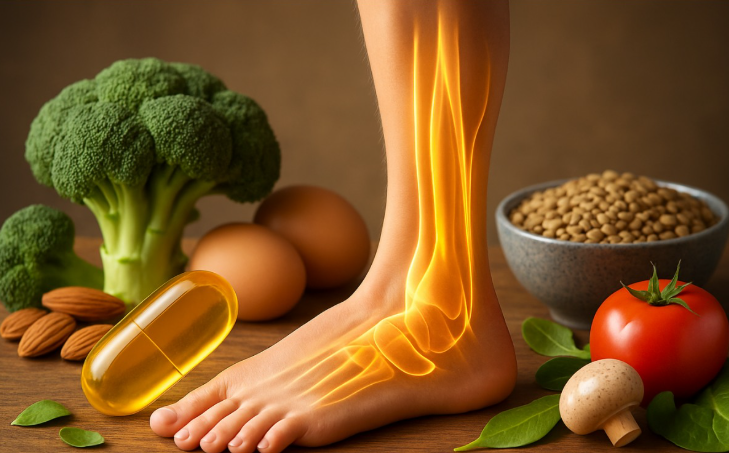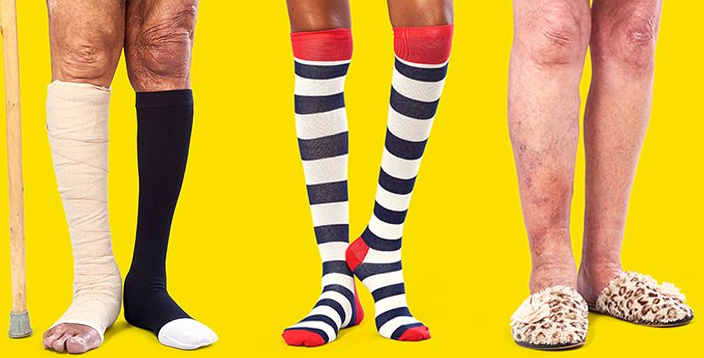Weak legs can make everyday tasks like walking or climbing stairs feel challenging, especially for seniors looking to stay active and independent. While no single vitamin can instantly reverse years of leg weakness, research suggests that vitamin D may play a key role in supporting muscle strength and overall mobility. Inspired by health discussions around natural remedies, this article explores how vitamin D, combined with lifestyle changes, could help seniors strengthen their legs naturally. Let’s dive into the science, practical tips, and safe ways to boost leg health for a more vibrant life.

Understanding Leg Weakness in Seniors
Leg weakness in older adults often stems from a mix of factors, including muscle loss (sarcopenia), reduced nerve function, or nutrient deficiencies, according to the Mayo Clinic. Aging naturally reduces muscle mass by about 3–5% per decade after age 30, per Harvard Health, which can lead to unsteady legs and a higher risk of falls. Vitamin deficiencies, particularly vitamin D, are also common in seniors, with over 50% of adults over 65 showing low levels, per the CDC.
Vitamin D is crucial because it helps your body absorb calcium for strong bones and supports muscle function. A 2019 study in The Journal of Clinical Endocrinology & Metabolism found that low vitamin D levels are linked to weaker muscles and poorer balance in older adults. While no vitamin can “cure” leg weakness, addressing deficiencies may improve strength and mobility over time. Let’s explore how vitamin D works and other ways to support your legs.
The Role of Vitamin D in Leg Strength

Vitamin D, often called the “sunshine vitamin,” is essential for healthy muscles and bones. It helps regulate calcium and phosphorus, which are vital for muscle contractions and bone density, per WebMD. For seniors, low vitamin D levels can contribute to muscle weakness, increasing the risk of falls and fractures.
Research suggests that supplementing with vitamin D may improve muscle strength in older adults. A 2020 meta-analysis in Age and Ageing found that vitamin D supplementation led to better muscle performance and reduced fall risk in seniors with low levels. However, results vary, and it’s not a one-size-fits-all solution. Combining vitamin D with other habits, like exercise, is key to seeing benefits.
Sources of Vitamin D
- Sunlight: 10–30 minutes of midday sun exposure a few times a week (depending on skin tone and location).
- Foods: Fatty fish (salmon, mackerel), egg yolks, fortified milk, or orange juice.
- Supplements: Vitamin D3 supplements, typically 800–2,000 IU daily, as recommended by your doctor.
Safety Tips
- Consult your doctor before starting supplements, as too much vitamin D can cause side effects like nausea or kidney issues.
- Get your vitamin D levels tested to determine the right dose.
- Pair supplements with a meal containing fat to improve absorption.
Building Stronger Legs with Exercise

While vitamin D supports muscle function, physical activity is critical for strengthening weak legs. According to the National Institute on Aging, regular exercise can slow muscle loss and improve balance, making daily activities easier for seniors. Gentle, senior-friendly exercises can target leg muscles without straining joints.
Exercises to Try
- Chair Squats: Sit in a sturdy chair, stand up slowly, then sit back down. Repeat 10–15 times, 2–3 times daily.
- Leg Lifts: Sit or lie down and lift one leg straight up, hold for 5 seconds, then lower. Do 10 reps per leg.
- Walking: Aim for 20–30 minutes of brisk walking most days, using a cane or walker if needed.
- Tai Chi: This low-impact practice improves balance and leg strength. Look for senior classes at community centers.
Tips for Success
- Start slowly, with 5–10 minutes daily, and increase as you feel stronger.
- Work with a physical therapist for personalized guidance, especially if you have mobility issues.
- Stay consistent—small daily efforts add up over weeks.
A 2021 study in The Lancet Healthy Longevity found that regular strength and balance exercises reduced fall risk by 20% in seniors, showing that movement is a powerful complement to vitamin D.
Supporting Leg Health with a Balanced Diet

Beyond vitamin D, a nutrient-rich diet supports muscle and bone health, helping seniors maintain strong legs. The American Heart Association recommends whole foods packed with protein, healthy fats, and antioxidants to fuel your body and aid muscle repair.
Key Nutrients for Leg Strength
- Protein: Lean meats, eggs, beans, or tofu help rebuild muscle. Aim for 0.5–0.8 grams per pound of body weight daily, per Harvard Health.
- Calcium: Dairy, fortified plant milk, or leafy greens support bones, working alongside vitamin D.
- Magnesium: Nuts, seeds, and whole grains aid muscle relaxation and prevent cramps.
- Omega-3s: Found in fish or walnuts, these reduce inflammation and support mobility.
Meal Ideas
- Breakfast: Greek yogurt with berries and a sprinkle of chia seeds.
- Lunch: Grilled chicken salad with spinach, avocado, and almonds.
- Dinner: Baked salmon with quinoa and steamed broccoli.
Practical Tips
- Keep pre-cut veggies or canned beans on hand for quick meals.
- Sip water throughout the day to stay hydrated and prevent muscle fatigue.
- Limit processed foods, which can increase inflammation.
Share this article with a friend who wants to stay active and strong in their golden years!
Lifestyle Habits to Boost Leg Strength

Additional habits can enhance your efforts to strengthen weak legs. These senior-friendly practices, backed by experts, support overall mobility and well-being.
- Get Enough Sleep: Aim for 7–8 hours nightly to allow muscles to recover, per WebMD.
- Manage Weight: Maintaining a healthy weight reduces stress on leg joints, per the CDC.
- Stay Social: Join a walking group or community class to stay motivated and reduce stress, which can affect muscle health.
- Avoid Smoking: Smoking reduces blood flow to muscles, per the American Lung Association. Seek free quit-smoking resources if needed.
Daily Checklist
- Take a short walk or do chair exercises.
- Eat a protein-rich meal or snack.
- Spend 10 minutes in the sun (with sunscreen if longer).
- Drink 8 glasses of water.
What to Expect and When to Seek Help
Natural approaches like vitamin D, exercise, and diet can improve leg strength over weeks to months, but they’re not a quick fix. A 2022 study in Geriatrics & Gerontology International found that combining vitamin D with resistance training improved muscle strength in seniors by 10–15% after 12 weeks. However, results depend on your starting health, consistency, and underlying conditions.
If leg weakness persists, worsens, or is accompanied by numbness, tingling, or frequent falls, consult a doctor. Conditions like neuropathy, arthritis, or circulation issues may require medical attention. Regular check-ups can also monitor vitamin D levels and overall health.
Why Natural Approaches Matter for Seniors
Strengthening weak legs naturally empowers seniors to stay independent, active, and confident. These strategies—eating well, moving more, and ensuring adequate vitamin D—are affordable, accessible, and align with a proactive approach to aging. They also boost energy, mood, and overall health, making daily life more enjoyable.
For many seniors, small changes like a morning walk or a nutrient-packed meal become rewarding rituals. Whether you’re aiming to keep up with grandkids or simply move with ease, supporting leg health naturally is a step toward a fuller life.
Comment below with your favorite tip for staying strong or let us know how you’re supporting your mobility!
Final Thoughts
Weak legs don’t have to hold seniors back from living vibrantly. While vitamin D can play a key role in supporting muscle strength, combining it with exercise, a balanced diet, and healthy habits offers the best chance for stronger legs. These natural, evidence-based strategies are simple to start and can make a real difference over time. Take one small step today—whether it’s a sunny walk or a vitamin D-rich meal—and move toward a stronger, more active you.
Disclaimer: This article is for informational purposes only and does not substitute professional medical advice. Consult your doctor before making health changes, especially if you have medical conditions or take medications.

Comments
Post a Comment